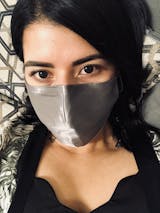Many experts say that a circular economy is a way forward in the future. While this is becoming a reality in many industries, the beauty industry has a long way to go. Just about every beauty brand would have to reconsider its packaging and ingredients.
But at present, most beauty brands are still using virgin plastic in their packaging. Not only that, but they are not sourcing their ingredients in a completely sustainable manner.
However, a few brands are paving the way for a more responsible future in beauty. This article will discuss what a circular economy means, how the beauty industry can adopt a circular economy, and the brands leading the circular beauty movement.
Beauty Trends
One of our recent articles highlighted some of the upcoming beauty trends to keep an eye out for in 2022. These include:
- Sustainable Products
- Climate Positive
- Imperfect Beauty
- Zero Waste
- Biodiversity Awareness
- Circular Economy
A circular economy promotes the use of resources that are already existing. So instead of creating something from new resources, a circular economy creates something new from existing resources. We often see it in fashion and furniture, and it's starting to spread into other industries.
Our overconsumption problem has primarily catalyzed this trend. We are consuming, wasting resources, and adding to our landfills at a rate faster than our planet can handle. If we continue at the rate we're moving, we won't have any natural resources left; who knows what health implications excessive waste will cause us long-term (1).
The Trifecta of Sustainability
For brands to be considered sustainable, they need to start looking at their business, from ingredients to packaging and their operations. We like to call it the "Trifecta of Sustainability," which we take pretty seriously at Fait avec Coeur.
Ingredients
When it comes to ingredients, it's pretty safe to say that most beauty brands are unsustainable in their approach. We've seen a clean beauty movement happening in recent times. But just because a brand uses "clean" ingredients doesn't necessarily mean it's sustainable or harmless to the environment.
Sourcing ingredients, whether it be synthetic or natural, uses up resources. If done carelessly and in excess, the ecosystem suffers. We've seen entire species of botanicals become endangered. We also exploitation of workers increase when the ingredients come from developing countries, like Palm Oil and Cotton. So when a brand says that their ingredients are "clean," we also need to ensure that they're also sustainably sourced.
Another factor to consider is that not all "clean" ingredients are environmentally-friendly. When we continue to wash products off our skin and down our drains, even if they aren't considered harmful to humans, it doesn't always mean that it doesn't harm our planet. Some chemicals bioaccumulate in ecosystems, and when they reach specific potency, they can negatively affect our environment.
Things to look for when choosing a brand for its ingredients is:
- Conflict-free ingredients
- Sustainably sourced
- Fairtrade/certified organic
- Circular
Circular ingredients are not very common right now, but we see them in some brands. Take UpCircle Beauty, for example. Their entire brand is built on the concept of repurposing discarded food and beverages to create their skincare. So far, they salvage ten different byproducts, like coffee grounds and chai spices, with plans to increase their range as they grow.
Packaging
We're still seeing an incredible amount of virgin plastic manufactured and sold in the beauty industry. This is a problem that many brands don't even acknowledge. They often use the term "recyclable" to describe virgin plastic packaging. Sure, it's recyclable. But to date, only 9% of plastic has been recycled.
We've said it once, and we'll keep saying it repeatedly; plastic does not biodegrade in nature. Instead, it breaks down into millions of microplastics, which is now an epidemic. We talk about this issue weekly because it's so incredibly infuriating that brands are not showing more responsibility with their packaging.
The absolute best way to minimize this issue is for brands to use packaging that is either:
- Zero-waste
- Low-waste
- Plastic-Free
- Circular or refillable
Zero-waste is a debatable term. Most brands that claim that their products are "zero-waste" are often still using "recyclable" virgin plastic. The argument is that plastic can be recycled, making it technically zero-waste. But as we just mentioned, only 9% has been recycled. So, in our opinion, unless a product is entirely package-free or made from compostable or biodegradable materials that leave no trace behind, a product is never truly zero-waste.
Low-waste is a more accurate term that brands sometimes use, though it isn't as commonly used. Low-waste can also mean many different things, depending on who you ask. Any packaging that can be recycled is technically low-waste.
Plastic-Free is our favorite kind of packaging. But it isn't always perfect. Although using other materials like glass, aluminum, and cardboard is better for the environment, manufacturing said materials isn't always the most sustainable option. Glass is also heavier, so logistically, it can have a heavier footprint than lighter materials. But glass is a natural resource, so if it ends up in a landfill, it's not going to harm the environment.
Recycled plastic is considered a circular material. It takes plastic that already exists, and it is made into packaging. So instead of creating new plastic, which involves extracting crude oil, and refining it to create more plastic, which takes an unbelievable toll on our environment, it uses existing plastic.
The problem with recycled plastics is that they can only be recycled a couple of times before they lose their integrity. So, unless that plastic is then repurposed into other things, like park benches, or homeless shelters, that plastic is going to end up in landfill eventually.
No solution is perfect. But a circular economy is better than the current operation we have in place. It simply isn't sustainable to keep consuming and creating new products when we already have so much.
Brands Leading the Circular Movement
While the circular movement is relatively new to the beauty industry, many brands are taking the initiative and adopting more circular operations in their business. Here are just a few honorable mentions:
UpCircle Beauty
UpCircle Beauty salvages byproducts from the food and beverage industries destined for landfills. What started as two siblings getting their morning coffee has become one of the world's leading circular beauty brands.
The pair noticed the coffee grounds that were being discarded every day in their local café, and when they learned how much coffee was going to waste just in London alone, the duo decided to come up with a solution. They now have ten different byproducts that they reclaim and use in their skincare formulas.
"Our ultimate mission is to leave the world better than we found it by transforming ingredients that would otherwise be discarded into natural, organic beauty products – better for you, better for the world."
Fruu
Another brand that uses salvaged food is Fruu. This UK-based beauty company is focused on bringing sustainable products to the masses. Their balms and lip products are largely formulated using byproducts from fruit waste.
"If you can't afford to buy it, it is not sustainable! We strive to use the most responsibly-sourced ingredients possible and offer guilt-free sustainable living at the most affordable cost possible."
Three Ships
Three Ships salvage Aspen Bark from the lumber industry. Aspen Bark is brimming with salicylic acid, a natural acne-fighting ingredient. You'll find this ingredient in one of their best-selling products, the Refresh Papaya and Salicylic Acid Cleanser. They sustainably source the rest of their ingredients and create products at an affordable price.
Three Ships are also a PACT member, a recycling collective that takes difficult-to-recycle packaging and repurposes or recycles it responsibly. Three Ships acknowledge that their packaging isn't perfect, so they have given their customers a solution, which shows their commitment to sustainability.
"Our goal was to solve the problems we faced as consumers, we were tired of being lied to and ripped off by overpriced, green-washed brands filled with unnecessary chemicals."
Earth Harbor
One of my favorite brands and perhaps one of the most certified that I've seen right now is Earth Harbor. Their small-batch beauty products are lovingly handcrafted and contain 100% natural ingredients that are sustainably and responsibly sourced.
Earth Harbor is committed to ocean conservation, and part of its commitment is to use salvaged ocean plastic to create its packaging. They're also proud PACT members, so you can send your difficult packaging off to be repurposed into something new.
"We are anchored in responsibly sourcing the most premium, pure natural elements Mother Earth has to give. Therapeutic treatments are engineered using nutrient-rich plant oils, salts, herbs, seaweeds, and earth to return skin to ideal health and youthful radiance. Everything is lovingly crafted in sustainably manufactured micro-batches by skilled artisans to maintain quality, purity, and freshness."
Superzero
The last brand on the Circular Beauty list is shampoo bar company, Superzero. This brand uses upcycled blueberry seed oil and compostable bio-wrappers salvaged from the beer industry in some of their best-selling formulas. They're committed to making waterless, plastic-free products that work.
"... we started from zero and turned to natural chemistry to create the world's lightest personal care – from the way it makes you look and feel, to being light on your purse, to being ultra-portable wherever your life takes you, all the way to the lightest footprint beauty could ever have. No more compromise – just the best of both performance and sustainability."
There aren't too many beauty brands out there that are taking on a circular beauty operation, but if you're looking to take your sustainability journey to the next level, look at the circular beauty brands we mentioned as a solution. A circular economy helps to ease the demand on our planet and is something we're going to see more of very soon.
Emma Jade has been a trained esthetician for over 15 years. She is a sustainable skincare writer, educating and building awareness around proper skin health that doesn't cost the Earth.
Some of the products promoted in our blog are from our online store. Many others are brands we have researched and found to be great examples of sustainable, ethical, and innovative brands in their field, and we don't profit from mentioning them in our blog. #CollaborationOverCompetition
Resources
1 https://www.epa.gov/report-environment/wastes
2 https://scholar.google.com/scholar?q=circular+economy+ncbi&hl=en&as_sdt=0&as_vis=1&oi=scholart
3 https://www.sciencedirect.com/science/article/abs/pii/S0921344916301604
4 https://www.ncbi.nlm.nih.gov/pmc/articles/PMC6559262/
5 https://www.glamourmagazine.co.uk/gallery/circular-beauty
6 https://www.natrue.org/circular-beauty-upcycled-ingredients-in-cosmetic-products/
7 https://www.cosmeticsdesign-europe.com/Hot-Topics/Sustainability-and-circular-beauty
8 https://www.cosmeticsdesign-asia.com/Article/2021/11/03/Circular-beauty-How-beauty-is-accelerating-the-transition-in-the-post-pandemic-era
9 https://www.harpersbazaar.com/beauty/skin-care/a37754699/emma-lewisham-jane-goodall-circular-beauty/
10 https://www.econyl.com/blog/community/6-circular-beauty-brands-to-have-on-your-radar










